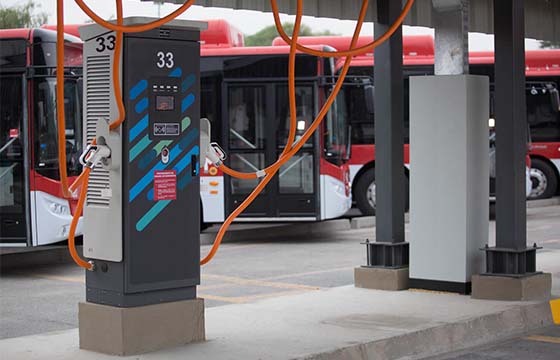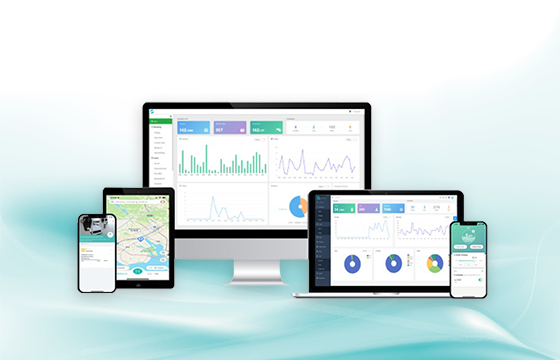Time:
The global electric vehicle (EV) industry has witnessed tremendous growth during the past few years. As per Bloomberg New Energy Finance, worldwide sales of EVs surged from around 3.2 million in 2020 to 10.3 million in 2022. The firm predicts more than 13 million EV sales in 2023 and exponential growth in the coming years—as many as 20 million EV sales in 2025.
Commercial EV sales saw an increase of over twofold in 2021 and reports state that major manufacturers of trucks across the globe anticipate 35% to 60% of their annual sales to be electric trucks by the year 2025.
The increasing adoption of electric vehicles necessitates the development of a charging infrastructure to accommodate them. The growing number of consumers who are making the transition to EVs has led to a high demand for charging stations. According to a recent report, the global EV charging infrastructure market is expected to grow at a CAGR of 43.3% from 2020 to 2026.
According to a recent report by grand view research, the EV charging solutions market is expected to reach $217.06 Billion by 2030, growing at a CAGR (Compound Annual Growth Rate) of 30.6% from 2022 to 2030. Factors driving this growth include increasing demand for EVs, government incentives and regulations, and advancements in charging technology.
So, what does the future hold for EV charging in 2023 and beyond? Here are some trends that we can expect to see.

Alternating current (AC) chargers were cheap and convenient in the early days of EV infrastructure. However, one of the biggest trends we’ll see in EV charging is fast charging stations are becoming the standard for public charging. These stations can charge an EV’s battery up to 80% in around 20-30 minutes, making them an attractive option for busy EV owners on the go.
According to the IEA, the rate of DC charger adoption has grown faster than the rate for AC charger installations between 2015 and 2021. In 2020, Europe installed far more DC fast chargers than AC chargers and in 2021 the number of fast charger installations was up 30% to about 50k units. The United States also saw rapid growth in DC fast charger installations during the same time. Korea installed more than 15k DC fast chargers in 2021, 50% more than 2020.
Another trend that’s likely to take off in the coming years is wireless charging technology. Wireless charging eliminates the need for physical cables, making the charging process more convenient for EV owners. Simply park your car over a wireless charging pad and the battery will start to charge automatically.
Several automakers are already developing wireless charging technology, and it’s expected to become more widespread by 2023. This technology will be particularly useful for EV owners who park on the street or in parking lots where traditional charging stations may not be available.
In the electric vehicle charging solution market, the adoption of the Plug and Charge standard is anticipated to be one of the most significant trends in 2023. This is a technology standard that facilitates a smooth and secure connection between electric vehicles (EVs) and charging stations, allowing for automatic identification and authorization of the EV. With this technology, EV owners can easily plug their vehicles into a charging station and commence charging without the requirement for a separate authentication process.
It aims to improve the charging experience for EV owners, making it more convenient, efficient, and cost-effective.
Smart EV charging will use two managed charging systems.

In this system, the user can use a mobile app to monitor their vehicle’s battery state, track charging records, manage devices, and make a charging schedule when the charging tariff is low.
The operator can manage multiple sites from a central hub using the Charging Station Management System (CSMS). The system enables the management of revenue, memberships, and energy output.
Learn more about "EV Charging Management System"
The fifth trend to be observed for 2023 is the utilization of vehicle-to-grid (V2G) technology. V2G technology enables electric vehicles to seamlessly connect with the power grid and contribute towards grid services by transmitting back excess energy stored in their batteries.

The use of this technology allows electric vehicles (EVs) to serve as portable energy storage units that support the balance between the grid's supply and demand. In times of high demand, the grid can draw power from the EV batteries to meet it, while during periods of low demand, the EV can charge its battery via power sourced from the grid. These practices foster a balanced power system, increasing its stability and efficiency.
In conclusion, the future of EV charging looks promising. EV owners can look forward to a more convenient, cost-effective, and environmentally friendly charging experience in 2023 and beyond. Grasen's team of experts specializes in keeping a close eye on the EV charging industry, including its regulations, latest trends, and developments. Contact us today to discover how implementing EV charging at your business could improve sustainability, efficiency, and profitability.
Submit Request